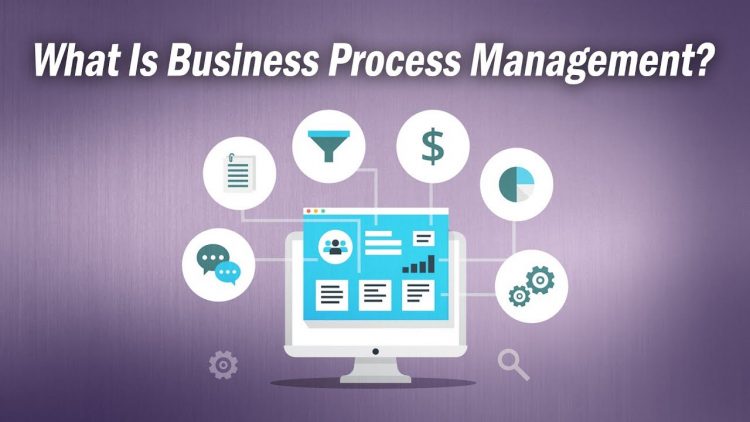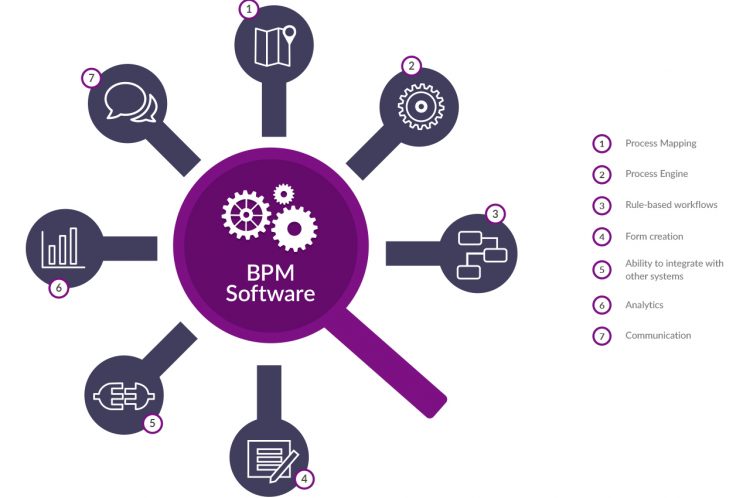Can you imagine a successful company without efficient business processes? Whether we talk about product or service firms, the common element is that they all revolve around established processes. Many of them remain invisible to the end client but are at the core of business success – from in-depth analysis, measurements to process tracking and optimisation suggestions. You guessed it right, all these ongoing processes need adequate business process management (BPM) strategies to be efficient.
From experience working in Dreamix, a bespoke software development company, learning that BPM is a vital step towards business growth. However, keeping an eye on existing processes is not enough to extract a meaningful value from all the data you gather. In our increasingly digitised society, tracking and reaching your KPIs (key performance indicators) is a lot easier if you use software solutions that lead you to data-driven decisions and visible results.
1. What is Business Process Management

99% of all businesses are in the category of small-to-medium enterprises (SME), and in order to keep running, they depend on specific technical and operational processes. Generally, business process management can be grasped as a holistic approach with a set of practices towards the end goal to improve product or service quality, boost KPIs and timely remove bottlenecks. BPM aims to identify and automate such central processes, maintain the working ones and optimise those that need to be further improved.
BPM has two broad management areas: short-term and long-term activities. An example of a short-term process is identifying whether a team is overwhelmed with ongoing tasks or any blockers that prevent efficient workflow. On the other side, a long-term example would be monitoring work performance and using the obtained data during the following planning stages. Another BPM variations are well-structured and repeatable processes and those that are not structured and flexible.
2. A Brief History of Project Management
No matter if we talk about building world-famous landmarks such as the Egyptian pyramids or the Great Wall of China, there was a division of workforce with each group having its individual work focus. Ever since people had to organise team-structured activities, such undertakings required careful planning and a strategic approach prior to the actual execution. This brief timeline of important events connected to project management gives us a nice overview of how one thing led to another and processes gradually gained a new formal shape.
It was not until the 20.century that previously informal process structures started to become more systematic and based around scientific methods. The modern face of project management was strongly influenced by the invention of the Gantt chart, a type of bar chart for easy illustration of dependency relationships between multiple activities. Later on, followed specific role differentiations within the management alongside technological advancements that helped establish more elaborated BPM as we know it today.
3. Key Elements of a BPM Solution

Business process management is built around three core elements: business rules, business events, and business processes. Business rules are the essential logic that runs behind each software application as a static code, which is then passed down to the QA testing stage and production environments as compiled artifacts. The usual formats of business rules are “if-then-statements” and “case statements” that trigger an action when conditions are met.
The next core element is business events that entail a group of business rules when adding a temporal element. Put simply, to trigger an event, you will need a certain period of time when business rules are applied. For example, if the business rule requires a single purchase to be within the credit card balance limit, the transaction can either be accepted or rejected. A possible business event is to inspect a 24h period and see if purchase venues are physically possible, e.g. Amsterdam, Sofia, New York. If this is detected as impossible, the event will block the card.
4. Types of BPM Systems
Both business rules and business events combine to create streamlined processes to boost consistency, increase visibility and limit errors. Any kind of business process can be successfully managed and automated by utilising a technological solution. Fundamentally, the three main types of BPM are human-centric, document-centric and integration-centric. The first one is human-friendly and primarily guided by visual elements that directly impact employees and customers, e.g. hiring process or a CRM system.
The document-centric type of BPM revolves entirely around documents, and a typical end goal is the final document approval (e.g. budget) upon thorough review. In the most common scenario, all documents are conveniently stored on the cloud, preventing data loss and making remote access flexible. Finally, the integration-centric BPM creates a smooth data flow distributed through connected networks to decrease data redundancy & manual work and to increase productivity. Typical use cases of integration-centric processes are marketing and sales.
5. Should You Use BMP Software?

No matter how you choose to keep track of business processes and the data around them, chances are that this can either happen using paper documents, online spreadsheets or smart software solutions that allow you to take full control of your data, resources and time. The most evident advantage of using a custom software solution is that it creates a visual representation of existing processes and includes the underlying dynamic dependencies between different metrics. This helps your team become more efficient and adopt Agile strategies to help you adapt to changes fast and grow sustainably.
Moreover, BPM software can help your organisation reduce operational costs in the long run, helping you relocate financial resources and innovate more. Using an automated BPM system makes the identification of faulty and no longer efficient processes incredibly easy, so that you can adjust them before they do severe damage. Ultimately, business owners who use custom BPM software improve their company’s productivity and remain competitive even in saturated industries.
 Hi Boox Popular Magazine 2024
Hi Boox Popular Magazine 2024



